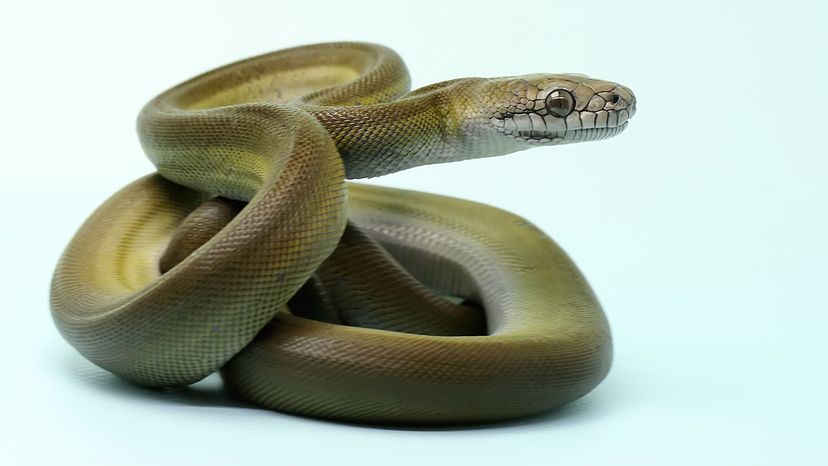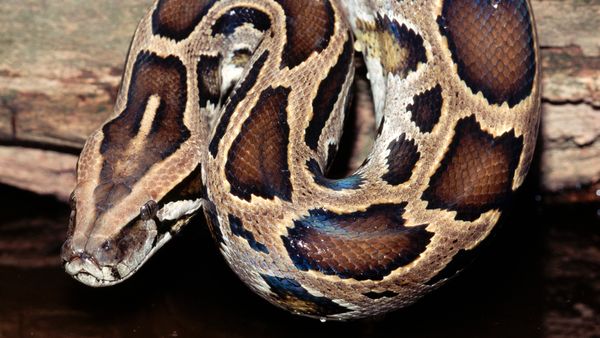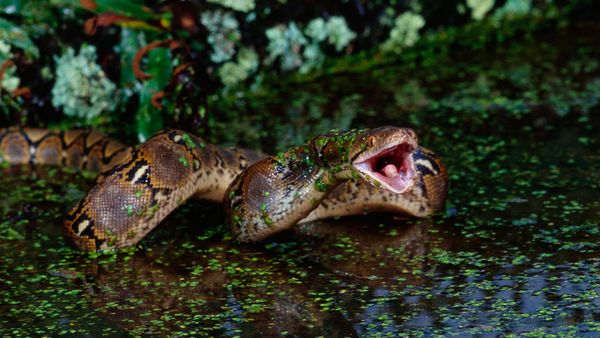The Papuan python is renowned for its impressive size and distinctive coloration. It typically has a robust and muscular body, a common trait among pythons.
Papuans can reach considerable lengths, with adults growing around 13 feet (4 meters) and some specimens growing even larger. This exceptional length ranks them among the most sizable snakes in their native environment (and some of the biggest snakes on the planet).
A fully grown adult Papuan python, typically weighing around 50 pounds, may see its weight fluctuate depending on age, health and environmental conditions. Larger specimens, especially those with plentiful food resources, can exhibit substantial weight, reflecting their muscular build.
Coloration and Skin
The Papuan python has scales with a smooth texture, contributing to its sleek appearance. While it can change color, its coloration is usually close to olive green, which is where it gets its common name.
The shade of green can vary slightly among individuals, ranging from an almost brownish, dark olive hue to a lighter, more vibrant green. Some individuals may have an underside distinctly lighter than the rest of the body.
The snake's head is distinctively python-like and somewhat broader than its neck. Its eyes are typically small with vertical pupils, characteristic of nocturnal predators. The python's face may exhibit slightly different coloration, with some individuals showing darker markings around the jaw and near the eyes.
As a constrictor, the large snake possesses significant physical strength. This strength is primarily in its body, which it uses to coil around and subdue prey. Unlike venomous snakes, it relies on this physical prowess to hunt.
The python's skin is also noteworthy for its sensory capabilities. Like other pythons, it has heat-sensing pits located around its mouth. These pits are a crucial adaptation, allowing the snake to detect warm-blooded prey, even in total darkness.



